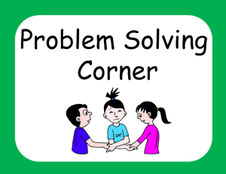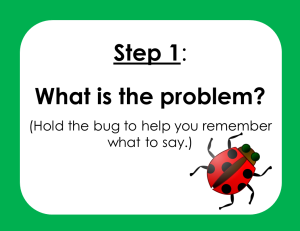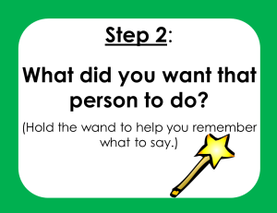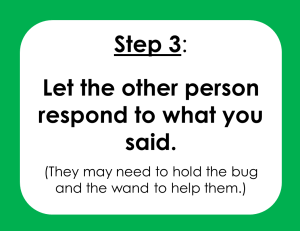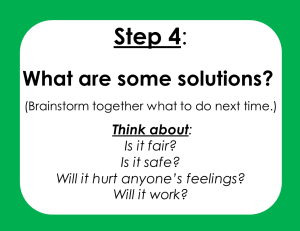How to put an end to Tattling in your ClassroomThere always seems to be a line of students in front of you when they come in from recess anxious to tell you (tattle) about something that someone did or events that happened. As a teacher, it’s our responsibility to listen to each and every story to determine whether some form of bullying or other serious incident has taken place. This can take away precious teaching minutes from your day.
Preparing for The Problem Solving Corner To introduce this method of problem solving/conflict resolution, I will discuss with the class what bullying is and the difference between problems that need teacher assistance and those issues that they can handle on their own. Some great books that I read aloud with the class during the year that give examples of bullying are “Chrysanthemum”, “The Recess Queen”, “The Juice Box Bully”, “The Hundred Dresses”, “The Invisible Boy”, “How to be Cool in the Third Grade” and “Blubber”. What is the The Corner? The Corner is the place in the classroom where the students engage in the conflict resolution process. In case you’re wondering, it doesn’t have to be in a corner. I position The Corner behind my desk or close to a chair that I use during class time so that I can hear and see what is occurring to make sure a good solution for both parties is reached and that further issues do not develop. I have a set of posters on the wall at The Corner that guides them on how to solve their problem. These posters (which are shown below as Steps 1 through 4) are available as a free download at my Teachers Pay Teachers store, Laurie’s Classroom. I place a library pocket or Velcro on the applicable poster to hold a toy bug (Step 1) and a magic wand (Step 2) that are used by the students in the conflict resolution process. You will have to supply the toy bug and the magic wand. How it Works I start by demonstrating how to use The Corner. I pretend to be both the student with the complaint (Complainant) and the student the issue is with (Complainee). I demonstrate what they should say to each other to get the dialogue started. I make sure to emphasize that this should be done in a whisper voice so that the rest of the class cannot hear what is being said. Assessing the Issue As students come to me with their complaint, I ask the following questions;
If we establish that the issue is something they can handle themselves, the students begin the conflict resolution process as described in the next section. If this involves a student from another class, I will contact the other teacher and arrange a time for this to take place. It has been my experience that most of the issues that they feel they can handle involve someone in their classroom or in their grade. The Process The Complainant goes to the Complainee and asks them to meet at The Corner, preferably right after coming into the classroom since the issue is fresh in their minds. Sometimes there are more than two students involved, depending on the issue. The Complainant then takes the toy bug and tells the other person(s) (could be more than one which is fine) about their complaint. The Complainant will then take the wand and state what they would like the other person(s) to do or how they would like the problem to be solved. The toy bug and wand are then returned to the pockets.
For the first few times the students use The Corner I will sit with them while they go through the steps. The other students are instructed to read quietly. If I find that the problem cannot be solved within a short time frame, typically no longer than ten minutes and usually less, I suggest that we meet again during recess or after class. Eventually, my presence is not required.
I have to admit that I was surprised how well this process works. I find that as the year progresses, the line in front of my desk diminishes and students will go to The Corner on their own. When this occurs, I will check in with both parties with a simple, “everything okay?”, once they’re finished. If you try this solution, let me know how it worked for you in the comments section below! Please leave me a note if you’d like a different topic covered and I’ll share my tips and advice. You can check out all of my teaching products and free downloads at my TpT store. Please Follow Me to receive notifications on new products and upcoming sales. Happy teaching. Laurie
0 Comments
Leave a Reply. |
